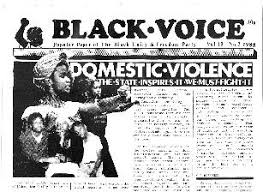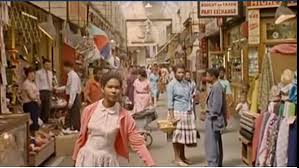After a broad promise on March 25th, the Minister of Sports Arts and Culture, Nathi Mthetwa, announced the detail of a R150M relief fund for those employed in the arts and sports sectors yesterday, on Sunday March 29th.

Official acknowledgment that earnings in these sectors have been decimated by Covid-related cancellations and closures is very welcome. That some artists certainly will benefit from these proposals should not be ignored.
But their nature suggests that the Department’s thinking remains imprisoned within increasingly irrelevant concepts of how most South African cultural workers today – and particularly those located in communities rather than formal structures – actually function.
The total amount is relatively small. That was always going to be the case. Government is valiantly trying to stretch already scarce resources across multiple competing demands for an as-yet indeterminate period of time, and should be applauded by all of us for trying to do what it can.
Organisational disparities
Where the amount becomes problematic is in relation to decision-making and disbursement mechanisms. The plan for sports has been agreed via SASCOC, and no doubt payments will involve the various sports discipline governing bodies. Most professional sportspeople are – because they have to be – affiliated to these. Whatever the well-documented weaknesses of certain sports bodies, that implies some payment channels with real reach; much of the sports money will go where it’s supposed to.
The plan for arts was developed with CCIFSA (the Cultural and Creative Industries Federation of South Africa), an oversight and co-ordinating body established by DSAC. Unlike the sports bodies, artists and their organisations are not required to be part of CCIFSA. Indeed, its affiliates represent a small minority of working artists in South Africa. Additionally, its operations, accountability and transparency have drawn criticism – see, for example, this critique from 2019 by Thami aka Mbongo https://www.artlink.co.za/news_article.htm?contentID=45395 , which mentions, among others, failure to submit reports of activities or up-to-date audited accounts. Its current leadership is extremely new.
This disparity presents a risk that the arts sector may be less effective than sports in accessing its share of already very limited funds.
The nitty-gritty
Payments under the relief fund are structured as followed:
- DSAC- approved projects with a Memorandum of Understanding in place with the department will receive their first tranche of payment (level to be determined by DSAC) after the date of the cancelled event, subject to submitting satisfactory documentation.
- DSAC institutions (eg the Playhouses and State Theatre) that have booked performers for events now cancelled will be treated similarly.
- Compensation for cancelled non-DSAC projects will be limited to “the list of 25 productions and 15 live events already submitted by national industry organisations”. (Few people I’ve asked know what these are.)
- Artists and arts organisations have until April 4 to submit proposals for Fourth Industrial Revolution projects (ie online) that can provide alternative employment for artists. These will only be accepted from “good standing, compliant, sector organisations”.
- The phrasing in the statement mentions only sportspeople at this point, but this seems to be an oversight; compensation will be available only to those who are solely reliant on their sector activities for income.
What about gig workers?
It’s been noted worldwide that provision for precarious employees is a weak or non-existent area in many Covid relief programmes. South Africa and the proposals above are no exception. Yet we know from two decades of research worldwide that the predominant forms of creative work are temporary and project-based – most cultural workers are gig workers. They must often supplement on-stage earnings with teaching, office work, waiting tables or other side hustles. All of those have also been ended by the Covid lockdown – but if they feature in, say, a SARS return (and you must be tax-compliant too to qualify) they could rule you out of relief.

How does it all stack up?
The relief programme for cultural workers thus faces the risk of being a programme that enacts Matthew 25:29: “For whosoever hath, to him shall be given, and he shall have more abundance; but whosoever hath not, from him shall be taken away even that he hath.” Formal arts sector employees and those with solid contracts for work through the next few months, who earn from nothing except their arts sector activities, will qualify for relief. As, of course, they should. But the majority of working artists, who construct an income week-to-week seeking gigs and filling the income gaps with something else, will find it hard to fit.

Community cultural workers, who may not be fluent in English, online tech skills or bureaucratese, will find it hard to put together claim documentation or proposals for future 4IR projects. Normally, they might approach an arts organisation for help and advice, and seek quotations from service and equipment suppliers. All of those have been shut by the lockdown, and the April 4 cut-off date is close.
Future prospects?
Using existing formal structures as channels is, of course, an eminently sensible way to respond to an emergency situation that breaks out as fast as Covid. The situation could even present an opportunity for CCIFSA to turn around its negative reputation by advocating for all artists (affiliates or not) and getting practical action to remedy some of these gaps. Without that, however, both it and DSAC’s focus on rigid, infrastructural and institutional solutions for a highly agile and informal creative sector (which long predates this crisis) will emerge from the crisis entrenched, as blocks to what cultural workers on the ground really need. And many artists will spend the crisis period destitute.
There will be a time after Covid. To sustain hope we need to be thinking ahead too.








 hits such as Extra-Ball, Embargo and – with one of the crown princes of the generation that followed him, Meiway – Freres de Sang
hits such as Extra-Ball, Embargo and – with one of the crown princes of the generation that followed him, Meiway – Freres de Sang 












